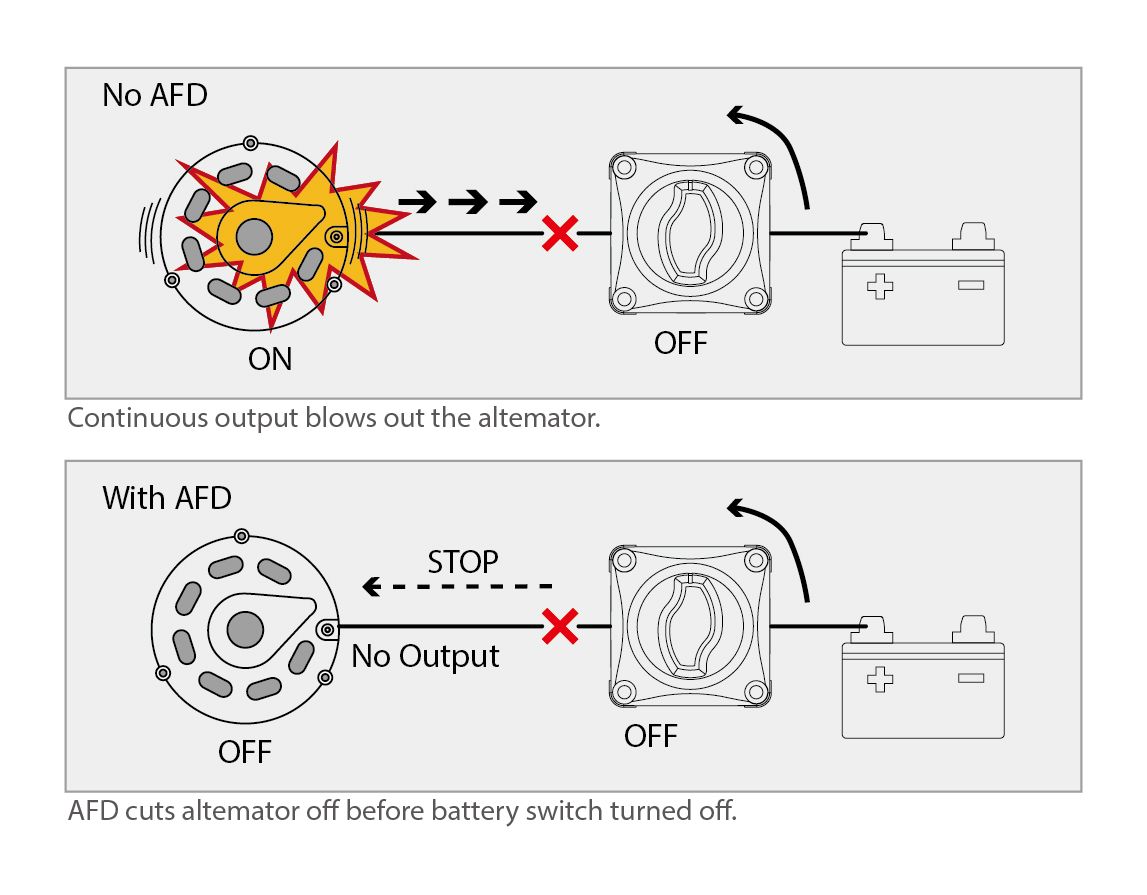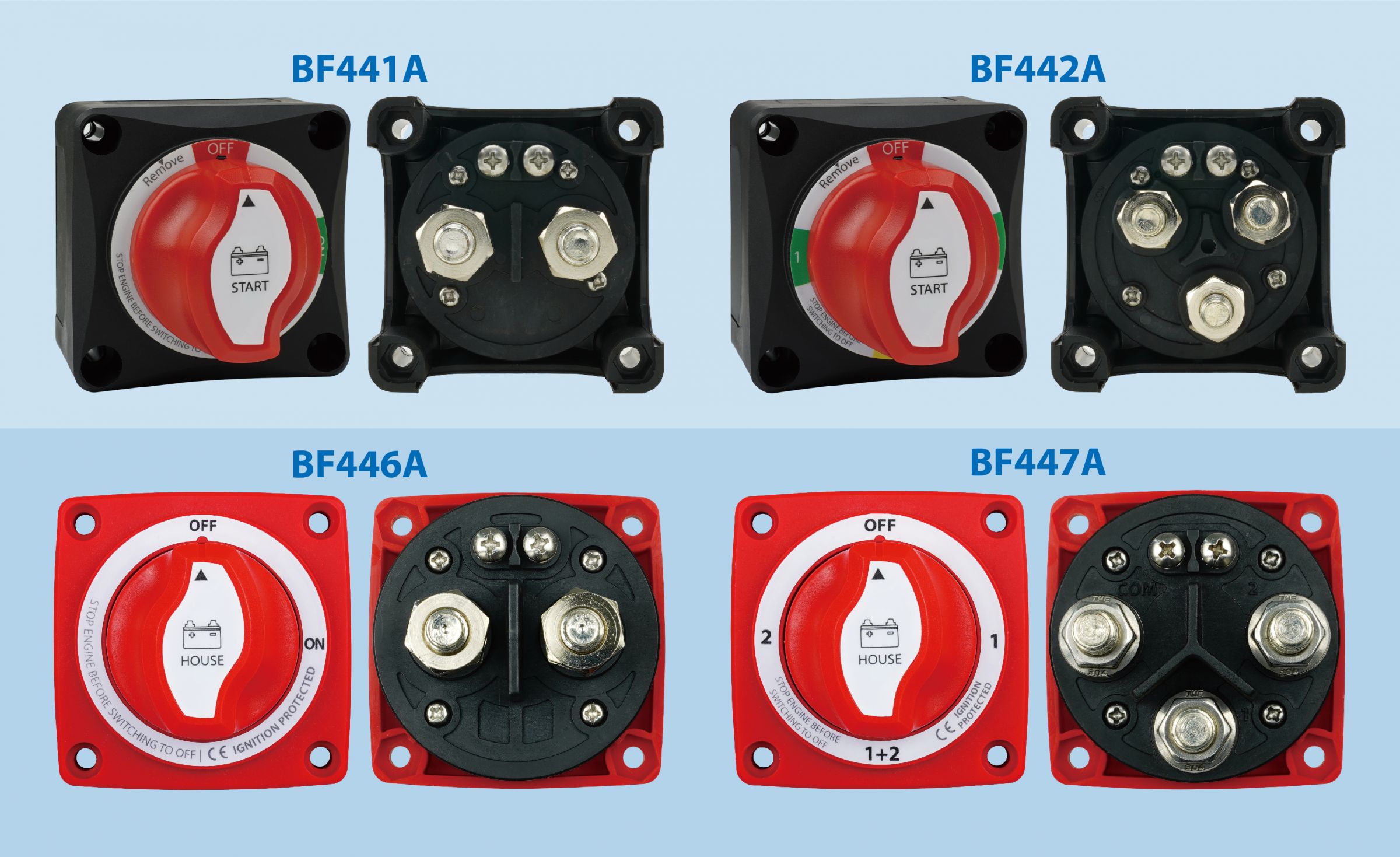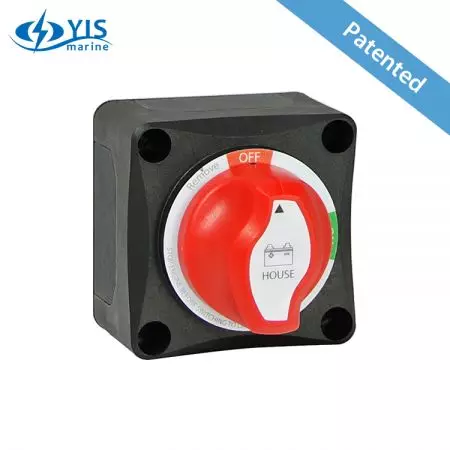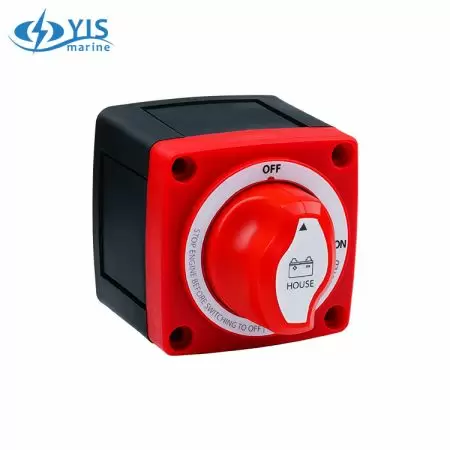
AFD (Alternator Field Disconnect) Function for Battery Switches
Battery switches are important components in marine and automotive electrical systems. They allow you to control the power flow to your batteries and devices, and help you manage your power usage effectively. AFD, or Alternator Field Disconnect, is a feature that is commonly found in battery switches. In this article, we will explain what AFD is and how it works.
How does an Alternator generate currents?
An alternator is a device that generates electrical power by using the engine's mechanical energy. It is commonly used in cars and other vehicles to charge the battery and power the vehicle's electrical system.
The alternator consists of a rotor with mounted electromagnets and a stator made up of windings of wire. The rotor spins inside the stator, creating a magnetic field. A small field current is supplied to the rotor, which powers the electromagnets to produce the magnetic field.
As the rotor spins and a field current is supplied to it, the alternator generates alternating current (AC). The stator typically has three separate windings of wire positioned so that the AC current generated for each winding is out of phase with the others. This helps to produce a smoother and more continuous output.
To convert the AC current into DC current, diodes are used as a rectifier. A diode will only allow current to flow in one direction, essentially acting as a one-way valve, allowing AC current to become DC current.
The regulator is the device that controls the power output of the alternator and supplies the field current. An external regulator is usually mounted close to the alternator in the engine compartment, while an internal regulator is contained within the alternator housing.
The alternator has four main connections: an output terminal that charges the battery, a ground terminal, a field connection that supplies the field current to the rotor, and a separate connection to the stator windings. Overall, the alternator plays a crucial role in generating electrical power and ensuring the proper functioning of a vehicle's electrical system.

What is AFD (Alternator Field Disconnect?
When charging the batteries through the battery switches, if the battery switch is accidentally turned off without turning off the alternator first, the alternator will have no output path and the output voltage will suddenly rise. Eventually this high voltage will blow out the rectifying diode inside the alternator. The AFD ports allow you to shut down the alternator right before you turn off the battery switch, preventing the diodes from burning down. For battery switches without AFD, there should be a clear marking label on the switch indicating “always turn off the alternator first before switching to OFF”.
How does AFD work?
When turning off the battery switch, in about half way the AFD port will be cut off first and then the main circuit be cut off, Making sure your alternator is always safe. When turning the battery switch ON again, the AFD ports will resume connection right before the main path.
All YIS Marine’s battery switches come with optional AFD feature, providing extra protection for your alternator. Our BF441 / BF442 are also the smallest battery switches in the market equipped with AFD feature.

- Related Products
Battery Main Switch (On-Off)
BF441 /BF441A (with AFD)
YIS Marine's Battery Main Switch (On-Off) is engineered for efficient and reliable battery...
DetailsDC 12V 24V 275A Patented Ignition Protected Waterproof Battery Selector Switch
BF442 /BF442A (with AFD)
YIS Marine's Battery Selector Switch (1-2-both-off) is a reliable solution for efficiently...
DetailsBattery Main Switch
BF446 /BF446A (with AFD)
Dimensions fits popular battery switches in the market, and removable knob for isolation/safety....
DetailsBattery Selector Switch
BF447 /BF447A (with AFD)
Dimensions fits popular battery switches in the market, and removable knob for isolation/safety....
Details




